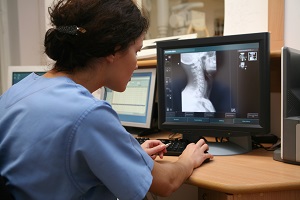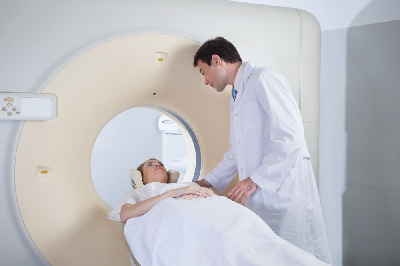Medicare will pay physicians a lump sum bonus equal to 0.5% of their 2014 Medicare reimbursement in exchange for successfully reporting data under the Physician Quality Reporting System (PQRS). The PQRS program has been in place since 2007, but reporting for 2014 is the final opportunity to earn an incentive payment. Failure to report PQRS data in 2014 will result in a 2.0% PQRS penalty through reduction of Medicare physician fee schedule payments in 2016, plus a possible additional 2.0% penalty under the new Value-based Modifier program.
HAP USA
Recent Posts
Radiology Practices: Don't Leave Medicare Money on the Table! on February 5, 2015
Hidden Reductions in the Medicare 2015 Physician Fee Schedule on January 2, 2015
According to the American College of Radiology (ACR), “The technical component for more than 200 imaging procedures will be cut by up to 55 percent in the final 2015 Medicare Physician Fee Schedule (MPFS) because of a decision to remove the direct practice expense of numerous film inputs that affected their reimbursement rates in favor of the cost of acquiring a desktop computer.” The decreased reimbursement is sizable for such procedures as myelography, CTA and a variety of ultrasound studies. The ACR’s analysis was released in their recent eNews article Analog to Digital Conversion to Cost Radiologists. The article includes helpful impact tables showing the specific change in radiology reimbursement rates between 2014 and 2015 for each CPT code.
The changes cited by the ACR are the result of Medicare’s attempt to recognize that most practices today use digital PACS technology rather than film. They removed the costs associated with film production and storage, but replaced those costs with only the value of $2,501 to represent a typical radiology reading station. No recognition was given to the overall cost of installing and maintaining the central PACS hardware and software. The ACR reports that, as an example, CPT 76377 (3D Post-processing of tomographic modality) receives a 45.7% reduction for film-based costs offset by a gain of only 1.7% when the desktop computer is substituted.
Categories: radiology reimbursement, radiology coding, medicare reimbursement, MPFS
The Impact of Coding Changes on Radiology Practices in 2015 on December 23, 2014
Radiologists concerned with maximizing practice revenue in 2015 would do well to understand the nuances of new coding changes that can impact reimbursements. The majority of coding changes for 2015 involve either bundling two codes into one when those codes are most often reported in combination or the creation of new codes to clarify their usage. The resulting impact on an individual practice’s overall payment levels should be minimal but will depend on its actual procedure mix. One major item of note is that Medicare will begin to provide reimbursement for Digital Breast Tomosynthesis (DBT, sometimes referred to as 3D Mammography) beginning in 2015 in the form of a code to be added-on to digital screening and diagnostic mammography services, although reimbursement from commercial payers is not guaranteed.
Categories: radiology reimbursement, radiology coding
What Radiation Oncology Practices Need to Know About the 2015 MPFS Rule on December 5, 2014
 The Medicare Physician Fee Schedule (MPFS) for 2015 sets the allowed fees for radiation therapy centers at a 1% increase, while radiation oncology professional services will remain unchanged. The Centers for Medicare and Medicaid Services (CMS) had originally proposed drastic cuts in both the professional and technical components but instead elected to defer any decision on assumptions related to major practice expense categories while additional data is gathered.
The Medicare Physician Fee Schedule (MPFS) for 2015 sets the allowed fees for radiation therapy centers at a 1% increase, while radiation oncology professional services will remain unchanged. The Centers for Medicare and Medicaid Services (CMS) had originally proposed drastic cuts in both the professional and technical components but instead elected to defer any decision on assumptions related to major practice expense categories while additional data is gathered.
Categories: radiation oncology coding, MPFS
How the MPFS Rule for 2015 Will Impact Radiology Practices on December 3, 2014
Medicare’s Physician Fee Schedule (MPFS) for 2015 contains relatively few changes that will impact payments to radiology practices next year. By revising some of the assumptions that go into the setting of the Relative Value Units (RVU), the allowed fees for diagnostic radiology professional services will decrease by 1% and imaging centers will see a 2% reduction, while interventional radiology and nuclear medicine services will remain unchanged.
How to Document y-90 Radioembolization Cases to Maximize Reimbursement on October 17, 2014
Click here to read our October 2020
y-90 radioembolization article
Interventional Radiology Meets Radiation Oncology – The y-90 Story
When a physician is performing an interventional procedure valued in the range of $4,000 – $6,000 for the professional component, attention to thorough and accurate documentation is a requirement for maximal reimbursement. Each case presents its own individual set of circumstances and a well-constructed operative report will tell the story of the case step-by-step. Each artery or branch into which a catheter is placed for diagnostic imaging or intervention is assigned a separate CPT code, and so the operative report must describe with specificity each catheter placement. When these descriptions are in a logical, sequential order, certified coders say that this allows them to better understand every aspect of the case so they can then accurately identify and apply up to 45 CPT codes to maximize reimbursement for it. A descriptive evaluation of each artery supports payment of the codes that are submitted for reimbursement.
Categories: radiology reimbursement, radiology billing, physician reimbursement, radioembolization, interventional radiology, nuclear medicine, y-90
Is Your Radiology Practice Ready for the New HCPCS Modifiers? on October 9, 2014
Four new HCPCS modifiers will be available for use beginning in 2015, according to a recent announcement by the Centers for Medicare and Medicaid Services (CMS). Known collectively as the –X{EPSU} Modifiers, they will be used to define specific subsets of the CPT Modifier -59 for a “Distinct Procedural Service”. The new modifiers are intended to offer more precise coding options that will allow practices to avoid potential payment delays, audits and reviews associated with modifier -59. CMS says that -59 is the most widely used modifier, covering a wide variety of circumstances such as to identify different encounters, different anatomic sites and distinct services. Because modifier -59 is so broadly defined, it is often used incorrectly and inappropriately.
Categories: radiology billing, medicare, radiology coding, medicare reimbursement, modifier -59, mppr, X{EPSU} Modifiers, cms
How New MPPR Rules Affect Your Radiology Practice Revenue on September 24, 2014
As private insurance payers begin adopting the Multiple Procedure Payment Reduction (MPPR) methodology that was implemented by Medicare several years ago, practices that are not ready could face a revenue loss of 25% or more for some services. Of specific interest to radiologists is United Healthcare, which announced in its May 2014 Network Bulletin that it would be expanding its MPPR to the professional component of imaging services in alignment with Medicare’s policy. This change will apply to United Healthcare’s Commercial and Community Plan. Originally the policy was to take effect in the third quarter of 2014 but under pressure from radiology advocacy organizations, United has now reported that implementation of the policy will be delayed until the fourth quarter of 2014. This brief reprieve provides radiology practices with an opportunity to lessen this detrimental impact on their revenue by improving their current processing methodologies before these changes take place.
Categories: radiology reimbursement, physician reimbursement, radiology coding, revenue cycle management
Why Radiology Practices Should Not Stop Preparing for ICD-10 on August 12, 2014
The Centers for Medicare and Medicaid Services (CMS) said unequivocally that October 1, 2014 would be the date for mandatory implementation of the ICD-10 coding system and that there would be no further delays. CMS was overruled, however, with the signing of the Protecting Access to Medicare Act of 2014 (PAMA) on April 1, 2014, which directed that CMS could not adopt ICD-10 any earlier than October 1, 2015. Now that CMS has confirmed this revised start date in the Federal Register, radiology practices should not delay their preparations for the transition. Here are four steps your radiology practice can take to keep moving ahead with plans to be ready for ICD-10.
Categories: radiology documentation, radiology coding, icd-10
Radiology Billing Denials - Don't Take No for an Answer on September 11, 2013
Unfortunately denials are a fact of life, but in radiology billing, there isn’t much room for error. Due to the high volume nature of the work, errors can proliferate quickly. Denials not only represent lost revenue; the cost of resubmission or appeals can sometimes exceed the reimbursement value. Managing denials is an imperative, but without a smart strategy, they could be eroding your profitability.
Categories: radiology reimbursement, radiology billing, denial management












